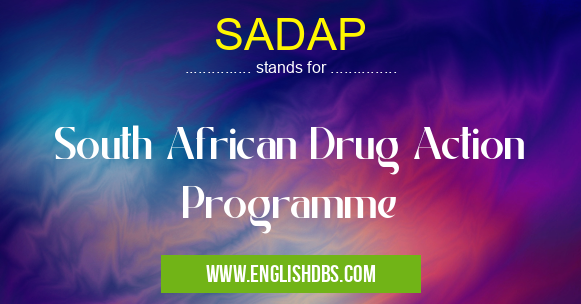What does SADAP mean in AFRICAN
SADAP has played a significant role in addressing the drug problem in South Africa. Its multi-faceted approach has contributed to:

SADAP meaning in African in Regional
SADAP mostly used in an acronym African in Category Regional that means South African Drug Action Programme
Shorthand: SADAP,
Full Form: South African Drug Action Programme
For more information of "South African Drug Action Programme", see the section below.
Objectives
- Reduce demand: Promote drug prevention and education, provide treatment and rehabilitation services, and support community-based initiatives.
- Reduce supply: Enhance law enforcement efforts to disrupt drug trafficking, reduce drug production, and control precursor chemicals.
- Reduce harm: Mitigate the negative consequences of drug use, including HIV/AIDS transmission, crime, and social disruption.
Key Components
- Prevention: School-based and community-led programs to educate youth about the risks of drug use and promote healthy lifestyles.
- Treatment and Rehabilitation: Provision of evidence-based interventions, including detoxification, counseling, and support groups.
- Harm Reduction: Distribution of clean needles and syringes to prevent HIV/AIDS transmission, as well as medication-assisted treatment for opioid dependence.
- Law Enforcement: Cooperation between various law enforcement agencies to combat drug trafficking and prosecute drug-related offenses.
Role and Impact
- Reduced drug use: Prevalence rates among youth have declined in recent years.
- Improved access to treatment: Treatment and rehabilitation services have been expanded to reach more people in need.
- Enhanced law enforcement: Drug trafficking has been disrupted, and drug-related offenses have been prosecuted more effectively.
- Mitigated harm: The provision of harm reduction services has reduced HIV/AIDS transmission and other negative consequences of drug use.
Conclusion:
SADAP remains an essential component of South Africa's drug policy. Its holistic approach and commitment to evidence-based interventions have made a tangible difference in reducing drug use, its associated harms, and improving public health outcomes. The program continues to evolve and adapt to emerging trends in drug use and the evolving needs of the population.
